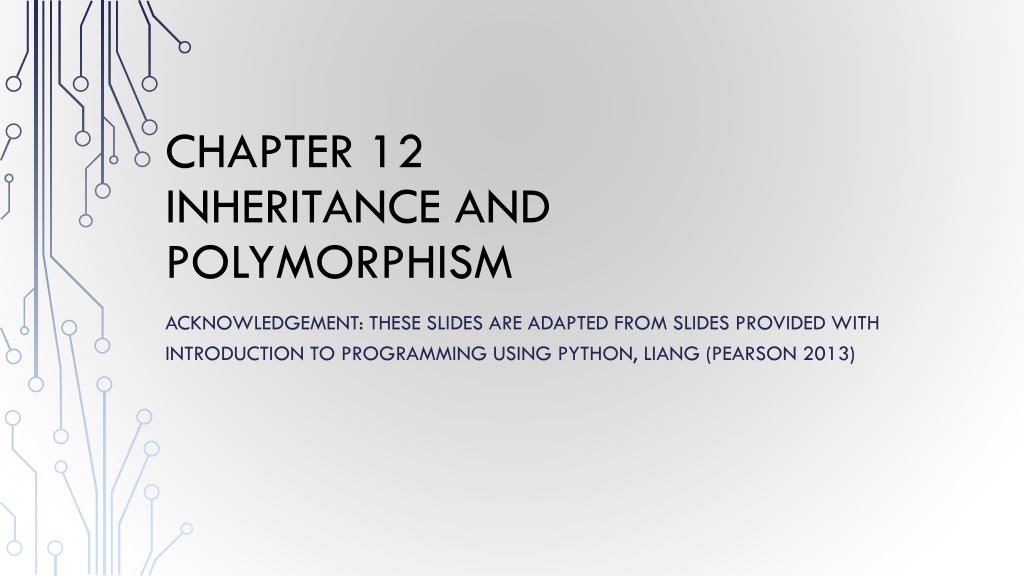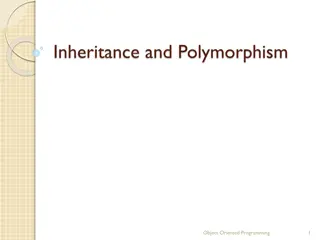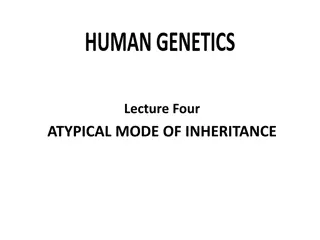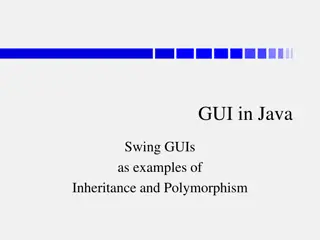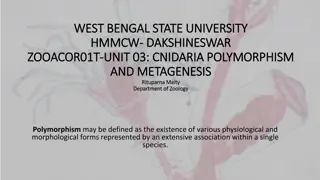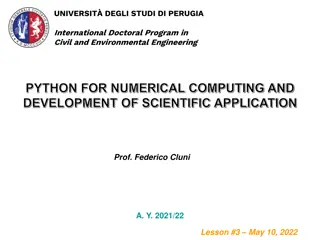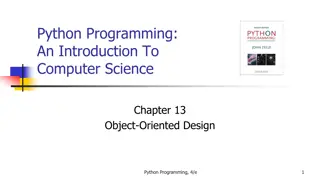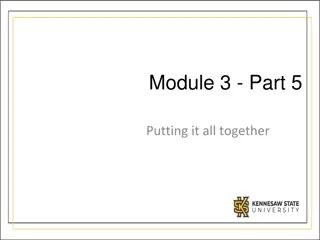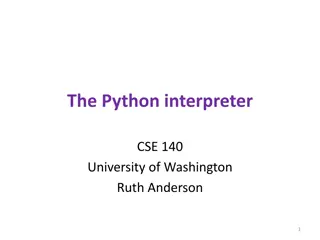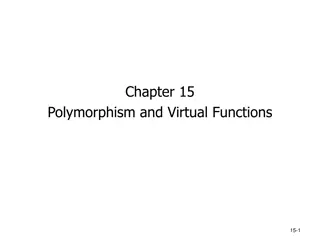Understanding Inheritance and Polymorphism in Python
Exploring the concept of inheritance in object-oriented programming, specifically in Python, to create a hierarchy of classes where subclasses inherit attributes and methods from a superclass. This approach helps to avoid redundancy and promotes code reusability. The relationship between superclasses and subclasses is discussed along with examples of geometric objects like circles, rectangles, and triangles. Additionally, the concept of method overriding for customizing subclass behavior is explained.
Download Presentation

Please find below an Image/Link to download the presentation.
The content on the website is provided AS IS for your information and personal use only. It may not be sold, licensed, or shared on other websites without obtaining consent from the author. Download presentation by click this link. If you encounter any issues during the download, it is possible that the publisher has removed the file from their server.
E N D
Presentation Transcript
CHAPTER 12 INHERITANCE AND POLYMORPHISM ACKNOWLEDGEMENT: THESE SLIDES ARE ADAPTED FROM SLIDES PROVIDED WITH INTRODUCTION TO PROGRAMMING USING PYTHON, LIANG (PEARSON 2013)
MOTIVATIONS Suppose you will define classes to model circles, rectangles, and triangles. These classes have many common features. What is the best way to design these classes so to avoid redundancy? Inheritance!
SUPERCLASSES AND SUBCLASSES Inheritance defines an IS-A relationship between two classes to denote a type/sub-type relationship Examples: a car IS-A vehicle and a boat IS-A vehicle they both have engines but a car more specifically has wheels and a boat has a rudder A superclass defines an abstract type, whereas subclasses define more specific types Superclass stores elements and provides methods that are common to all sub-types, whereas a subclass stores additional data and provides additional methods that more specialize the object type In the example: vehicle is a superclass and car/boat are subclasses All methods/data of the superclass are available to subclass objects Vehicle Car Boat
EXAMPLE GEOMETRIC OBJECTS GeometricObject -color: str -filled: bool The color of the object (default: white). Indicates whether the object is filled with a color (default: false). GeometricObject(color: str, filled: bool) getColor(): str setColor(color: str): None isFilled(): bool setFilled(filled: bool): None __str__(): str Creates a GeometricObject with the specified color and filled values. Returns the color. Sets a new color. Returns the filled property. Sets a new filled property. Returns a string representation of this object. Rectangle Circle -width: double -height: double -radius: float Circle(radius: float, color: str, filled: bool) getRadius(): float setRadius(radius: double): None getArea(): float getPerimeter(): float getDiameter(): float printCircle(): None Rectangle(width: float, height: float color: string, filled: bool) getWidth(): float setWidth(width: float): None getHeight(): float setHeight(height: float): None getArea(): float getPerimeter(): float
INHERITANCE IN PYTHON When we say a class extends another class, this defines a type/sub-type relationship. The syntax is as follows: class SubclassName(SuperclassName): Example: class Circle(GeometricObject):
OVERRIDING METHODS A subclass inherits methods from a superclass. However, sometimes it is necessary for the subclass to modify the implementation of a method defined in the superclass. This is referred to as methodoverriding. Syntactically, you just define the method in the subclass. For example: class Circle(GeometricObject): # Other methods are omitted # Override the __str__ method defined in GeometricObject def __str__(self): returnsuper().__str__() + " radius: " + str(radius)
THE OBJECT CLASS Every class in Python is descended from the object class. If no inheritance is specified when a class is defined, the superclass of the class is object by default. There are more than a dozen methods defined in the object class. We have seen quite a few of them already, e.g., __init__(), __str__(), and __eq__(other) class ClassName: ... class ClassName(object): ... Equivalent
__NEW__ AND __INIT__ METHODS All methods defined in the object class are special methods with two leading underscores and two trailing underscores. The __new__() method is automatically invoked when an object is constructed. This method then invokes the __init__() method to initialize the object. Normally you should only override the __init__() method to initialize the data fields defined in the new class.
__STR__ AND __EQ__ METHODS The __str__() method returns a string representation for the object. By default, it returns a string consisting of a class name of which the object is an instance and the object s memory address in hexadecimal. The __eq__(other) method returns True if two objects are the same. By default, x.__eq__(y) (i.e., x == y) returns False and x.__eq__(x) is True. You can override this method to return True if two objects have the same contents.
POLYMORPHISM The inheritance relationship enables a subclass to inherit features from its superclass with additional new features. A subclass is a specialization of its superclass; every instance of a subclass is also an instance of its superclass, but not vice versa. For example, every circle is a geometric object, but not every geometric object is a circle. Therefore, you can always pass an instance of a subclass to a parameter of its superclass type. This is the main way polymorphism is exhibited in python in which a subclass object "looks" like its superclass (e.g., by a parameter pass) but acts like its specialization. The magic of polymorphism is supported by dynamic binding in which when a method is invoked from an instance its most overridden form (closest to the actual type) is used instead of the most generic version
ISINSTANCE FUNCTION The isinstance provides a handy way to determine is an object instance is an instance of a particular class (e.g., a subclass of a hierarchy). Syntax: isinstance(object, className) Example: o = Circle(5) isinstance(o, Circle) # True isinstance(o, Rectangle) # False isinstance(o, GeometricObject) # True
